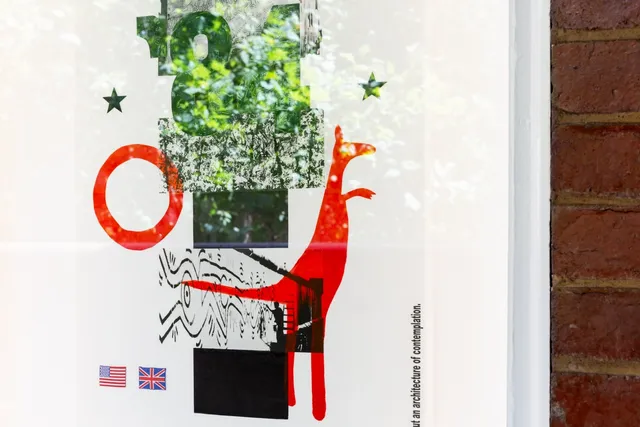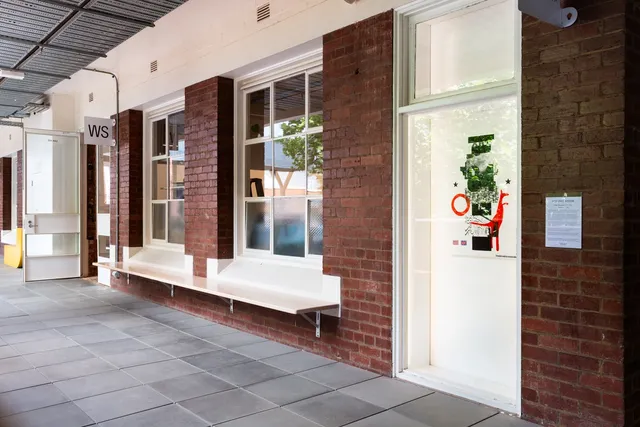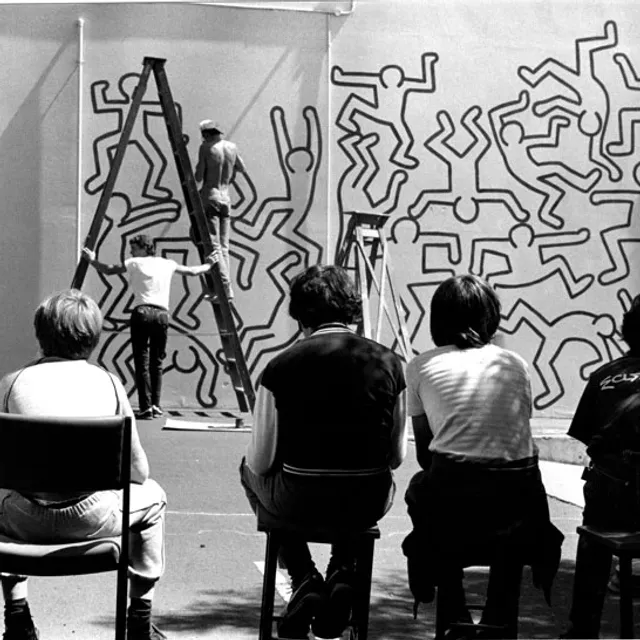“West Space”
Emily Hubbard
25 Jan → 5 Mar 2025
Window

Commissioned for the West Space Window, West Space by Naarm/Melbourne based artist Emily Hubbard explores the way art, images and ideals from the U.S. have come to dominate culture in Australia.
As she says, “it has become normalised for American art and pop culture to appear on everyday clothing and objects. We love to consume art just like we’re lovin’ a Big Mac."
Hubbard reflects on two key moments in the popularisation of American art in Australia.
The first occurred in 1973, when the National Gallery of Australia purchased Blue Poles by Jackson Pollock, with the support of Prime Minister Gough Whitlam. Purchased with Australian tax-payer dollars, the painting cost $1.3 million – the most ever paid for an American painting in the world at that time. Political artists in the South Australian collective Progressive Art Movement (PAM, 1974-78) staunchly opposed this indicator of American influence, and fought to raise consciousness of the connection between American culture, war, and economic imperialism.
The second was in 1984, when New York street artist Keith Haring visited Australia on the invitation of the Australian Centre for Contemporary Art. Haring undertook two temporary murals, at the National Gallery of Victoria and the Art Gallery of New South Wales, with a third mural at Collingwood Technical College, now Collingwood Yards, where West Space currently resides.
Two years later, Haring accepted an invitation by the U.S. aligned Checkpoint Charlie Museum to paint the Berlin Wall in the name of freedom, demonstrating how art has been used to advance the interests and influence of the U.S. against its enemies.
Hubbard renders these moments in history in t-shirt screen-printing materials and techniques, considering whether it is possible to creatively engage with the imported culture of dominant imperialist powers, or whether we are inescapably pawns of the U.S. and its interests. The title points to the saturation of American ideals in Australian culture, and art's historical function as a tool of soft political power.
Supported by City of Yarra through their Annual Grants Program.
Program
On Keith Haring, Public Art and Influence, Sat 8 Feb, 3 → 4pm
A walk around Collingwood Yards with artist Emily Hubbard and art historian Elyssia Bugg, looking at Hubbard’s work in relation to Keith Haring’s 1984 mural.
Part art historical and part geopolitical, they cover Hubbard’s exploration of American Pop art within an Australian context, and the government-supported import of American values here through Modern art and popular culture since the 1970s. Hubbard and Bugg draw out ideas of public art and its influence, as well as its political instrumentalisation.




Emily Hubbard is interested in exploring the relationship between art and popular culture, drawing inspiration from her experiences as a service worker in galleries, museums and libraries to produce art that counters individualism and builds solidarity.
